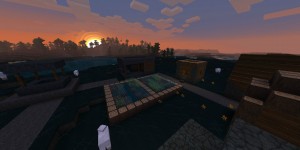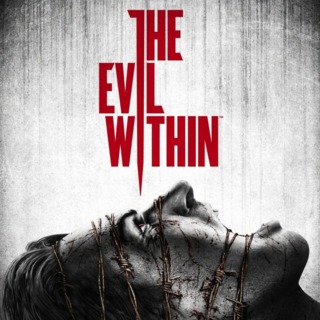
The Evil Within is a wonderful thing. While it unfortunately isn't quite a return to the survival horror of old, it at least makes for a brilliant blending of the then and now. It involves a lot of the hallmarks of the latter day Resident Evil games, while also incorporating the harsh nature and limited supplies of their forebearers.
Being lead by famed Japanese developer Shinji Mikami and his newly founded studio of Tango Gameworks, The Evil Within paves a path with its influences firmly placed on its bloodied sleeve. Anyone who's played Mikami's prior work Resident Evil 4 is bound to spot the innumerable similarities on display -- some that will require a keen eye to spot, some that feel like they were violently extracted right out of Resident Evil 4 and pasted into this. Despite the similarities, The Evil Within's more psychological horror-themed story helps give it an edge over the almost comparatively mundane tale of bio-organic weapons.
While the core gameplay will certainly seem familiar, it doesn't copy the RE4 formula wholesale. While it does have you controlling a character--Sebastian Castellanos--in third-person with an over-the-shoulder view shooting at not-Ganado, The Evil Within plays it up more like a standard shooter. You won't be pulling off crazy button-prompt melee attacks and your only venue for getting your fists dirty is with a quick minimal-damage smack, which on its own I find makes a significant difference between the two. What also sets it apart is the inclusion of matches. While you're primarily going to be aiming for the head, attempting to trip an enemy over can be beneficial as well; once one of 'em has found themselves falling over your bullets, you can then use a match to douse them in flame killing it -- and potentially catching any nearby enemies within close vicinity at that. You can also use them to burn any would be ''I'm totally dead right now and not going to get up once you've triggered a certain event'' enemies, too. Though of course like you would expect, you can only carry a finite amount of matches.

The monsters you'll be facing are pretty much the Ganado in all but name only, however. They follow the same rudimentary AI patterns of functioning like zombies, in a sense, but while being much more aggressive and being able to utilise a number of melee weapons, and later down the line even firearms... unfortunately. That said they still to this day make for an engaging opponent. The way they'll routinely try to swarm and overwhelm you injects much of the tension into the gameplay flow, and they harbor a keen balance of being dumb enough to be taken advantage of, but aggressive enough to still feel intimidating all the same. The enemy variety overall is a little lacking, however. Fortunately the Gana--sorry, Haunted are versatile enough in what weapons and tactics they'll implement that they're able to carry most of the game rather soundly.
As such, The Evil Within's combat is different while still feeling familiar all the same. Though what's most important to mention is it's still an awful lot of fun. Headshots are forever satisfying to pull off, thanks to the beautifully gooey sound effects and the superb degree of gore-filled feedback. Heads go pop, blood spews everywhere, and the weapon sound effects gives each shot a real sense of oomph. The typically limited cache of ammunition also helps to make every bullet feel special, and every missed shot a tragedy. Coming upon a handful of bullets you've found off of a corpse or inside a crate can be surprisingly relieving. Though while you're certainly far from swimming in ammunition, you're not likely to ever encounter yourself being completely dry. The game is balanced well enough to make it so you'll often always have just the right amount of supplies you need to get through each encounter, so long as you know how best to use it all. It does a brilliant job of making you feel vulnerable, yet still empowered enough to know you can do this.
That there is a surprisingly diverse upgrades tree certainly aids in the empowerment side of things. Throughout the game you'll start hearing a piece of classical music that I'm too uncultured to recall the name of. That'll signify that you're near the game's save room, where you'll transport via a mirror into a mental asylum, where you're greeted by a noticeably apathetic nurse. From there you can of course save your progress, but further back is a rusty, metal chair that you can sit down and have your brain tickered with. Doing as such allows you access to the game's surprising number of upgrades. They're all pretty standard fare -- weapon statistical upgrades, health upgrades, and so on. But there's enough there and you'll always only have so much 'green gel'--the game's currency--that you'll have to really think about how you want to spend it each time. There are also a number lockers that house some supplies for you to collect, only you first need to locate keys throughout the game to unlock them.
The amount of weapons you have at your disposal is a little on the slim side. You'll have available the requisite revolver, shotgun, rifle and magnum -- though despite the mundane selection, they all feel satisfying to use in their own right. Oh, and there's also this little thing called the Agony Crossbow, a weapon that'll certainly live up to its name throughout your monster killing. It initially functions as a regular crossbow, however you'll soon come upon multiple different varieties of ammunition for it. These include what essentially amounts to proximity mines, freeze grenades, and even flash bangs. It's a wonderfully versatile weapon and, like the rest of your repertoire, feels ever so powerful to wield.

While there wasn't quite as much as I was hoping, there's also some occasional bits of environmental interaction to help turn the tide in your favour as well. Most prominently are a number of traps that are both dangerous for both you and the monsters that are after you. As such, you could potentially lead them into the a wire trap or perhaps shoot one from afar to achieve maximum damage. Beyond the traps, there's some red barrels here and there, and even some bales of hay you can set alight and then comically kick towards your foes.Here's a video of mine to show off the generally scrappy nature of the combat anywhoo. Don't take that to be indicative of every combat encounter, but it's how things may end up from time to time! Despite this being a game where you're often going to have to kill everything to proceed, there's still a glimmer of that old school survival horror magic that makes for an important proponent of The Evil Within's combat.
Besides relying on your guns, you can also utilise some stealth -- however it's all rather rudimentary. It quite honestly comes across as a half-hearted reaction to The Last of Us and doesn't really add very much to the game itself. For one thing you can crouch walk, but you're pretty damn slow. Slow enough that it sometimes feels useless for how long it can take to sneak up to an enemy; slowly sleuthing my way around for the kill only to have the (sometimes literally) bloody thing turn around at the last second was an annoyingly common occurrence. You can also theoretically throw bottles as a distraction, but the trajectory marker is difficult to aim with--the AI often don't even react to it anyway--and should an enemy spot you, it can be incredibly difficult to actually lose their line of sight at that. Likewise you can choose to hide under beds or in cupboards, however the game rarely gives you a reason to. It's not that I at least haven't been able to get any stealth kills, but it's cumbersome to attempt and is generally shallow enough that it all feels borderline unfinished.
As such, that the game actually opens up with a forced stealth encounter doesn't it any favours. However after that's outta the way the game settles quite nicely into what the rest of the game will entail. The Evil Within is strictly linear, however it does a good job in dallying between more open environments to explore for supplies, to more claustrophobic corridors that'll have you traverse every corner with your gun up. The pacing in general throughout the entire game is genuinely superb. Like Resident Evil 4, it feels like it is constantly introducing new environments and set-pieces -- both big and small. The game has a brilliant ebb and flow to it, and it expertly understands when to keep things slow and atmospheric, and when to throw in some wave combat at you. Despite it being a rather lengthy adventure that took me about 14 and a half hours, I completed it all in two sittings it kept me so surprisingly stuck in. If there is one criticism it's that there's very few puzzles; not only are they few and far between, but they're also exceptionally simple. One of which has another character quite literally just tell you the solution, and another I solved completely by accident while I was prodding at the systems.

The psychological horror story set up gives Mikami free reign to continually pull the rug from beneath you and throw you into a completely different environment, or maybe block off the door you just came in through, and so on. Even the save room might not always be entirely safe. Oh right, the story. It's... considering the many other similarities to Resident Evil, you likely won't be surprised to learn the story it also a bunch of nonsensical junk. There's many references to things that aren't really explained, certain character fates feels unsatisfying, and so on. It tries to tell a tale that has some rather disturbing themes, but a lot of it simply falls flat. The dialogue is pretty stupid at that -- it's not quite Master of Unlocking stupid, but it gets pretty close. The voice acting too doesn't fair much better unfortunately, despite wrangling in all of this hollywood talent including Anson Mount and Jennifer Carpenter -- Anson Mount as Sebastian in particular is quite possibly the worst. It's one thing that he's bad, but that he just sounds bored throughout really deflates a lot of the potential for some Resident Evil-esque cheesy charm. Funnily enough it's veteran voice actor Yuri Lowenthal as your forever determined detective partner Joseph Oda that gives the best performance of the game. It's not unbearable by any means, and if anything it almost feels sort of nostalgic to encounter this level of storytelling in a game.
One thing that's important to note is that The Evil Within isn't especially scary. In fact for most I would bet it won't be scary in the slightest. It may carry a sometimes suffocating atmosphere about it, but despite playing it in the dark with headphones on... nothing. I tried, I really did, but alas. The game is still at the very least grotesque. Many of the enemy designs all look appropriately disturbing, and again the amount of blood that's constantly spraying everywhere is wonderfully akin to the B movies of the 80s. Some of the boss designs can certainly be intimidating at that, like the multi-armed 'Laura' and the lumbering, mysterious Keeper creature. The visuals throughout encompass a sometimes nauseating amount of grindhouse gore--there are a number of... let's say extravagant death animations for Sebastian--and with the way the game keeps mixing up the environments it always left me excited to see what other literal and figurative monstrosities was in store.

The presentation of it all may be divisive, however. The game is boxed in some pretty extreme black bars throughout, which I personally got accustomed to surprisingly quickly. Nonetheless, that there's not even any option to turn them off is a point to consider. The way the camera zooms in to your hand when you aim your weapon also took a little getting used to, but like the letterboxing it was something I was surprised to find I adapted to rather quickly. The game otherwise looks rather attractive, or as attractive as constant heaps of blood, blades and gibs can be. Some of the texture work is a little muddy, but overall the art direction of it all steals the show, again thanks in part to the variety of environments throughout the game. From the opening village shrouded in fog at the beginning to the post-apocalyptic city streets later on, it all looks fantastic. The sound effects are also sublime at that. Everything has a very sloshy, gooey nature to it, and the sound effect for scooping up puddles of green gel off the floor I can't help but find weirdly satisfying. Speaking for the PS4 version the framerate can prove to be troublesome during the early stages, however it isn't long before it settles down and keeps itself at a rock solid 30 from then on.
I have to admit, I was always rooting for The Evil Within to function as a gateway to the old school survival horror of the 90s. It's... not that, and anyone who's coming to The Evil Within for a harrowing experience, one made of shielding your eyes and being too frightened to move, it's not that either. What it is is a nostalgic runthrough of most of Mikami's work laid down in Resident Evil 4, and it didn't take too long for me to become enraptured with it all once more. So for anyone who's in the mood for a delightfully bloody shooter made up of all the Mikami-isms of old, The Evil Within is a must play.

